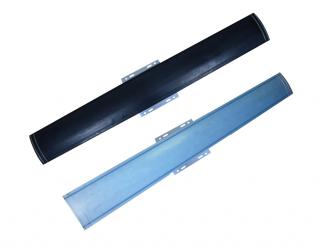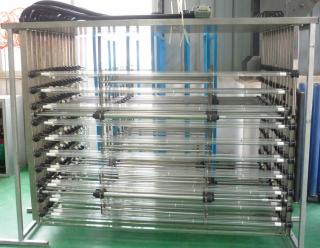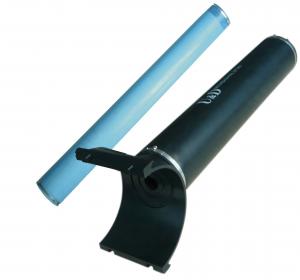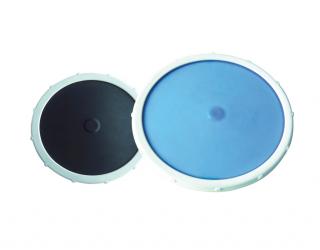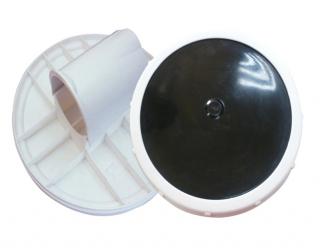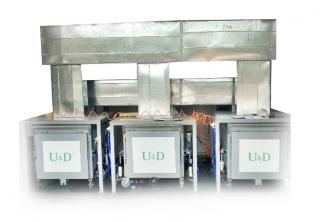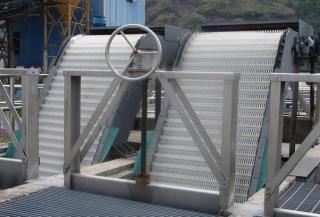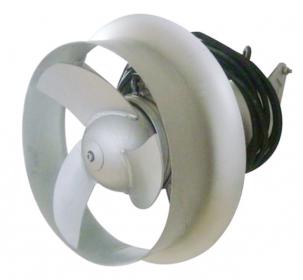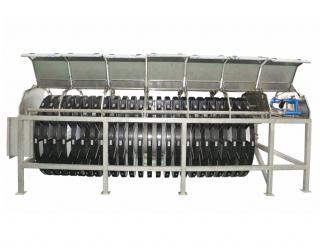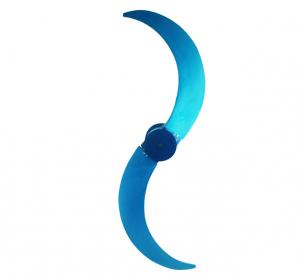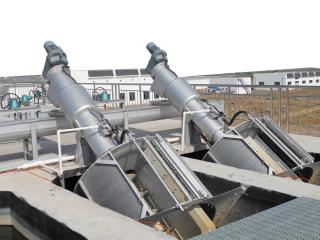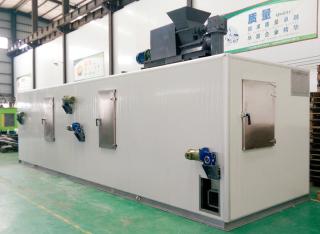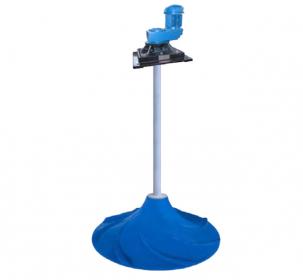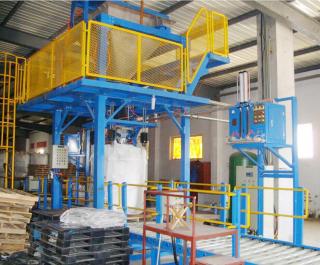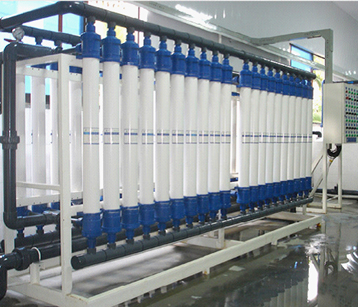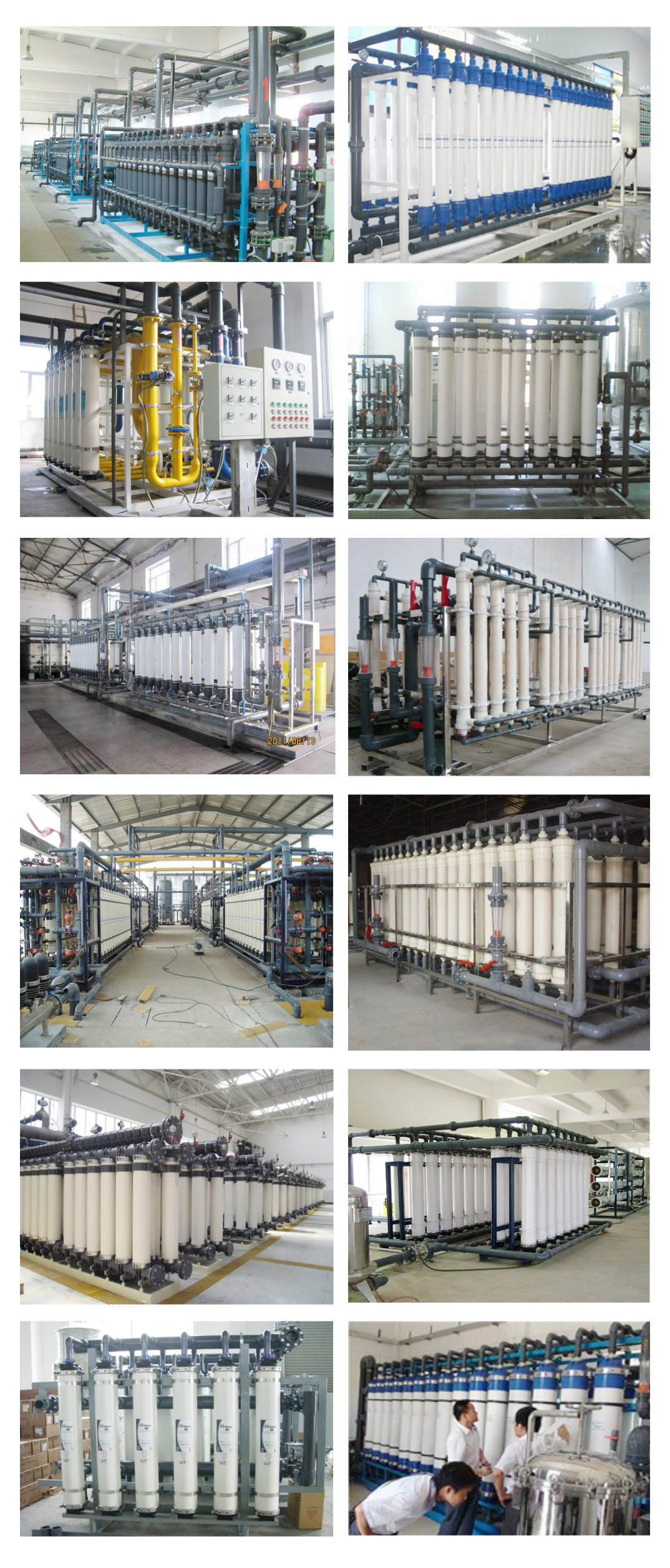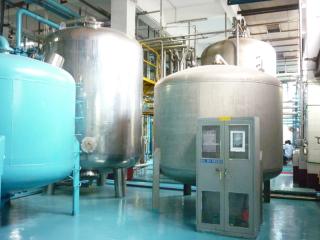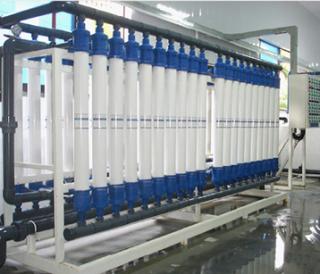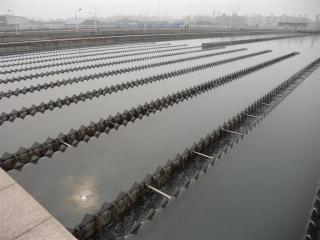- Product Overview
- Comments
- Project Case
I. Product Overview
1. Working Principle of Ultrafiltration Apparatus
Ultrafiltration is a membrane separation process following the screening principle and using pressure as driving
force, with the filter fineness falling within 0.005-0.01μm. The ultrafiltration apparatus can well remove from water the particles, colloids, bacteria, heat sources and
macromolecular organic substances. It can be widely used for separation, condensation and purification of
substances. The ultrafiltration process involves no phase inversion. The device can work at normal temperature,
especially suitable for separation of thermosensitive substances. It has good temperature, acid/ alkali and oxidation
resistance, and thus it can keep working long at below 60℃ and at pH value of 2-11.
2. Classification of Ultrafiltration Membrane
In terms of structural type, the ultrafiltration membrane is divided into such kinds as plate and frame type (plate type),
hollow fiber type, nano-film type, tubular type and rolled type. Of them, the hollow fiber ultrafiltration membrane is the
most mature and
advanced among all kinds of ultrafiltration membranes. The hollow fiber has an outside diameter of 0.4-2.0mm, and
an inside diameter of 0.3-1.4mm. On the hollow fiber tube wall there are lots of micropores distributed, and the bore
diameter is expressed by
the molecular weight of the substances intercepted that ranges from thousands to hundreds of thousands.The raw
water flows outside and inside the hollow fibers in a pressurized manner, which, respectively, forms the external
pressure type and internal pressure type hollow ultrafiltration membranes. Ultrafiltration is a dynamic filtration
process, in which the intercepted substances can be removed with the concentrated fluid, without blocking the
membrane surface, and thus the device can keep long term continuous operation.
3. Application of Ultrafiltration Technology
The earlier industrial ultrafiltration technology was applied in waste water and sewage treatment. In the past 30-odd years, the ultrafiltration technology witnessed major development, and now it has been broadly used in such
industries as food, beverage, dairy, biological fermentation, biological medicine, medicine & chemical, biological
agent, Chinese materia medica preparation, clinical medicine, printing and dyeing waste water treatment, food
industry waste water treatment, resources recovery and environmental engineering.
4. Advantages of Ultrafiltration Apparatus
A. The ultrafiltration membrane elements are produced and supplied by the famous membrane companies in the
globe, and so the customers are provided with the most superior quality organic membrane elements now in the
world, this ensuring the interception performance and membrane throughput.
B. The device enjoys high recovery, produces quality products, and is capable of high-efficient separation,
purification and high-expansion concentration of substances.
C. The treatment process involves no phase inversion, and so has no adverse effect upon the compositions of
substances, and such operations as separation, purification and concentration always take place at normal
temperature. Thus, the device is especially fit for treatment of thermosensitive substances. It perfectly prevents
high temperature from causing damages to bioactive substances, and excellently retains the bioactive substances
and nutrient components contained in the original materials.
D. The device features low energy consumption and short production period, has lower running cost than the
conventional process equipment does, and is able to reduce production costs and economic benefits of
enterprises well.
E. The device is characterized by advanced process design, high integration level, compact structure, small floor
space needed, easy operation and maintenance and low labor intensity.
F. The device is made of sanitary pipe valves and thus keeps the site clean and hygienic, so meeting the requirements
of the GMP or FDA production specifications.
G. The control system can be customized according to the user’s concrete use requirements. With the aid of the
advanced control software, it can provide online centralized monitoring of the important process parameters, avoid
manual misoperations, and ensure long-time stable running of the system in all respects.
5. Notes for Use of Hollow Fiber Ultrafiltration Membrane
A. The filtration system needs to be sterilized on a regular basis. The ultrafiltration membrane can intercept bacteria
but cannot kill them. Even an ultrafiltration membrane with the best interception ratio cannot guarantee that no
bacterium grows in the clean area over a long period of time. As soon as a bacterium arises, it will reproduce itself
in quantity, which has direct effect on the quality of water flowing out of the membrane. For this reason, the
surrounding environment and filtration system must undergo periodical sterilization. The sterilization period depends
on the quality of raw water supplied, and for the ordinary tap water in urban areas, it can be 7~10 days in summer,
30~40 days in winter, and 20~30 in both spring and autumn. In case of surface water as water source, the period
should be shorter. In the process of sterilization, 500~1000mg/L sodium hypochlorite solution or 1% aqueous hydrogen peroxide solution may be made to flow through
the filtration system in a circular manner, or the filtration system may be immerged in such solution, for about half
a hour.
B. As each ultrafiltration component is smeared with protection solution before delivered, they should be given a
thorough washing to remove protection solution on them prior to use. They need to be washed with low pressure
(0.1MPa) water for one hour, and then with high pressure (0.2MPa) water for another hour. In both cases, the
produced water discharge valve of the system should be kept open. If the produced water is used, it should be
checked and confirmed that the water contains no bactericidal agent in it.
C. The ultrafiltration components should be gently handled and given adequate protection. As they are all precision
fittings, they should be installed and used with due care, to be free from damages. At the end of their use, they
should be first washed with clean water, immersed in 0.5% aqueous formaldehyde solution for sterilization and
disinfection, and then properly sealed and placed. And in winter, they need also to be given anti-freeze treatment, or
else they may be discarded as useless.
6. Service Conditions
Service state: cross-flow filtration or full-flow filtration, back flush and rapid flush;
Back washing pressure: <0.1MPa;
Back washing flow rate: 200L/m2/hr;
Back washing frequency: 15~60min, depending on influent quality;
Back washing duration: 30-60sec;
Chemical flushing: depending on membrane material and pollution;
Sterilization: NaClO flushing, once each week ~ each month;
Feature: flushing intensity can be markedly increased, which aids in membrane regeneration.









